What are thermistor strings?
A thermistor, coined from “thermal” and “resistor”, is a sensor that changes resistance based upon temperature. It is used to measure temperatures within a specified range by using calibration tables to convert from resistance to temperature.
Thermistor strings are cables with integrated thermistors, usually pressed into a bead-like node at specified intervals along the length of the cable. They are used for subsurface temperature profiling applications, both deep and shallow, either in solid ground (soil and bedrock) or bodies of water.
Digital versions of these strings use a circuit design combining four functions into one chip: sensing, analog-to-digital conversion, identification, and communication. Compared to thermistors, digital strings offer benefits to the end-user, which will be described in more detail below (See Figure 1).
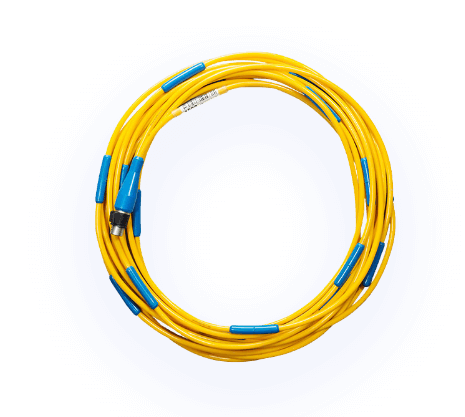
The cables are made of robust and impermeable materials to withstand harsh environmental conditions, as temperature sensors are embedded in the ground for short or long-term temperature monitoring. The sensors are often installed in wet drill holes or below the water table and therefore, they need to be waterproof. Designed with multiple temperature data points to account for the different depths within a single drill hole, users typically customize the number of sensors, spacing, and cable lengths, to match their site-specific requirements and for easy integration and data reliability.
What are thermistor strings used for?
Thermistor strings are used for different applications and environments within -55°C to +125°C (-67°F to +257°F), such as:
Environmental monitoring and research
Scientific researchers and environmental engineers use thermistor strings as part of their long-term studies of climate change and other impacts from industrial processes to the surrounding environments. The changes in temperature data over time are useful for understandinzg, forecasting and mitigating the impacts of climate change on cold regions’ permafrost thaw, freshwater ecosystems, and snow packs, which are essential for the welfare of communities, wildlife, vegetation and the planet. Below are some examples of specific environmental applications.
- Permafrost monitoring
- Streams/rivers/ponds/lakes monitoring (See Figure 2)
- Snowpack/Avalanche forecasting (See Figure 3)
- Coastal monitoring
- Climate change monitoring
- Cryosphere/glacier monitoring
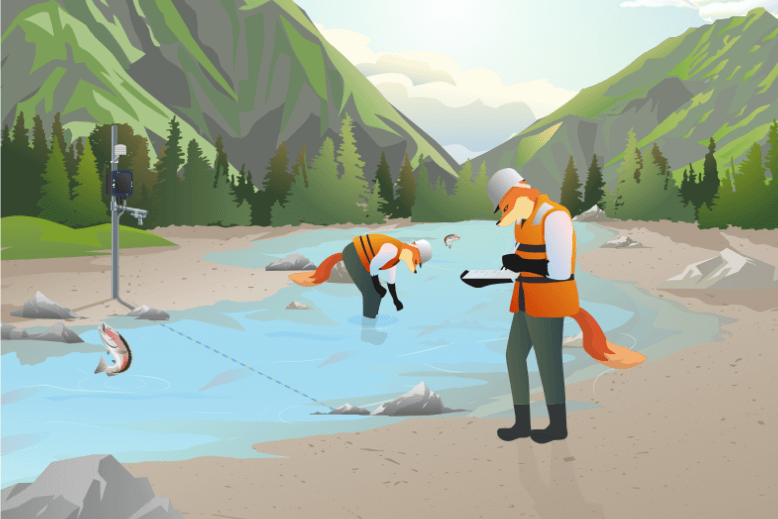

Geotechnical monitoring
Thermistor cables are critical for ground temperature monitoring as it helps establish or maintain the safety and integrity of mining and civil infrastructure. They commonly complement other types of geotechnical monitoring sensors which are used at these sites. Some of the common applications are:
Mining
- Artificial ground freezing in underground mines
- Tailings dam seepage (See Figure 4)
- Heap leach monitoring
- Acid Mine/Rock Drainage monitoring
- Mine infrastructure built on permafrost
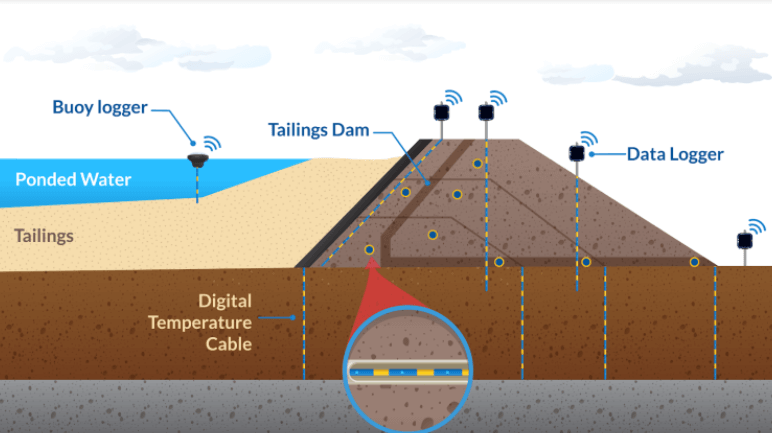
Infrastructure
- Artificial ground freezing for ground support and/or groundwater control (for vertical shafts and tunneling projects) (See Figure 5)
- Infrastructure built on permafrost
- Winter or ice road monitoring
- Road weather information systems (RWIS)
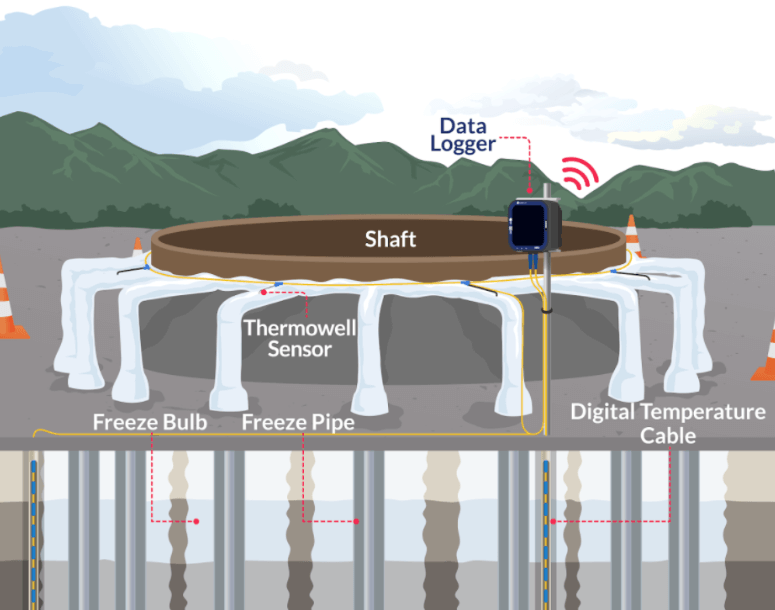
What are the types of thermistor strings?
The three common types of thermistors in environmental and geotechnical monitoring are analog thermistor strings, digital temperature cables, and temperature probes.
Digital temperature vs Analog thermistor strings
Both digital and analog thermistor strings are multi-sensor cables apt for monitoring temperature data points at different ground depths within a single borehole. They are also widely used in geotechnical and environmental monitoring within the Arctic and Antarctic regions of the world. However, they may be used for applications in other regions of the world where understanding ground and water temperature profiles is important.
Digital temperature cables are highly suited for applications where many sensors are required per drill hole, as they can be built with more sensors. This is due to the limited sensor capacity of thermistor strings. Since each analog sensor requires a pair of conductors, a 5-sensor cable, for example, has 10 conductors in total (See Figure 6). The more sensors attached to the thermistor string, the bigger in diameter the cable becomes. This is why analog thermistors are usually capped at 15-20 sensors, as the cable becomes uneconomic and difficult to physically work with beyond this point.

On the other hand, a digital thermistor cable only requires three conductors (See Figure 7), no matter how many sensors are installed. beadedstream’s Digital Temperature Cable can hold up to 125 sensors, for instance, and because the same three conductor cable is always used, the diameter of the string never changes in diameter.

Benefits of Digital Temperature Cables over Analog Thermistors
Overall, digital temperature cables have more advantages than analog thermistors, as outlined in the Table 1:
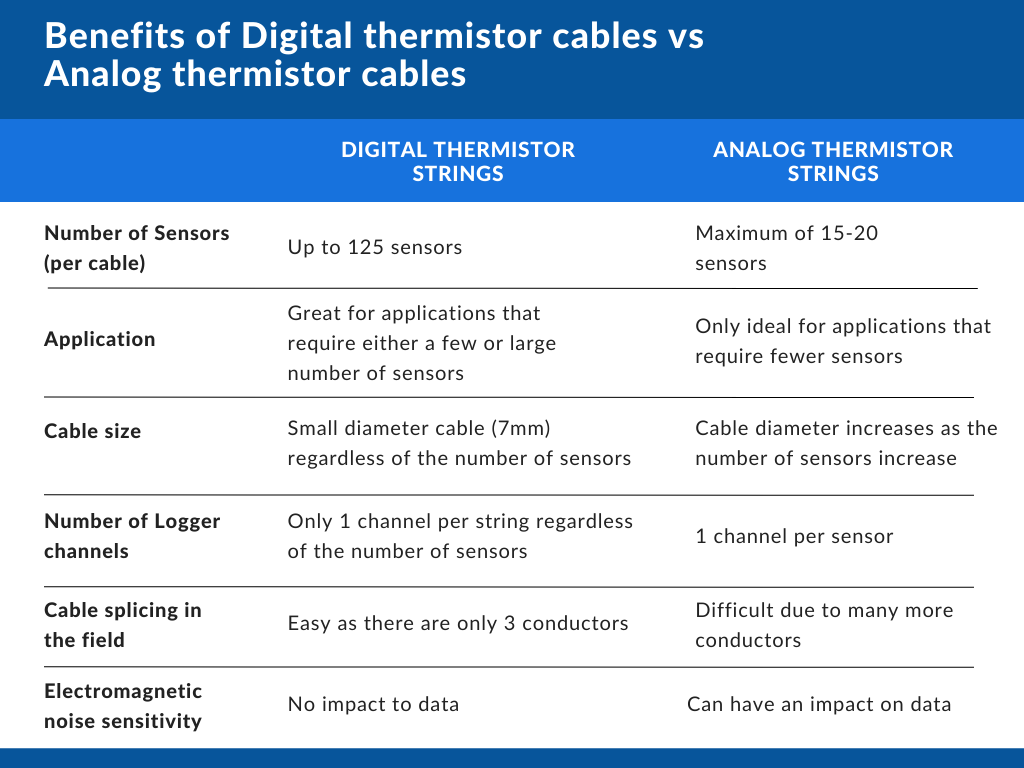
Temperature probes
Meanwhile, temperature probes are used for monitoring a single temperature point in the ground, in water or within a tank or pipe and can either be analog or digital. Within a shallow body of water such as a stream or within a tank, a single monitoring point may only be required which is an ideal use case for a probe.
Along a pipe, a temperature probe can be installed in a thermowell to monitor one location. However, there may be a need to monitor temperatures at multiple locations along the pipe but a conventional thermistor string configuration does not allow for the sensors to fit into the thermowell. Instead, a digital chain of temperature probes can be fitted onto a single cable with wye molds offshooting to each probe (See Figure 8).
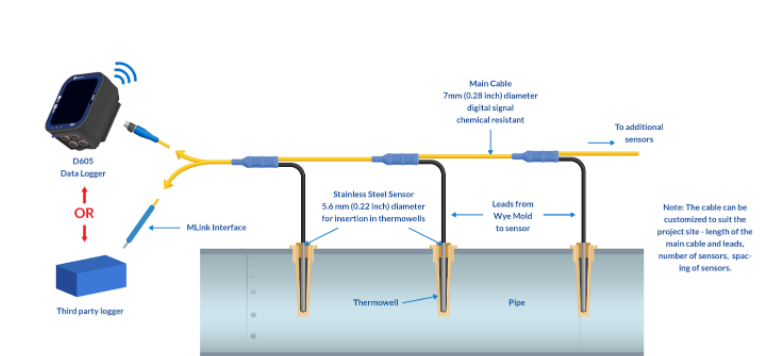
Temperature probes are not as frequently used in the ground for geotechnical and environmental monitoring because many other common sensor types (water quality or vibrating wire sensors) also contain a thermistor, and this eliminates the need for a dedicated temperature probe within the ground. But in applications where only a single temperature point is required and no other sensors are present, the probe can be used.
beadedstream specializes in digital thermistor cables with demonstrated experience in a wide range of industrial applications and environments in the cold regions of North America, Europe and Antarctica. Our engineers constantly find innovative solutions to support the challenges of environmental monitoring and research, civil and mining infrastructure projects, and other industries.
To learn more about beadedstream’s suite of remote temperature monitoring solutions, contact us at contact@beadedstream.com.








